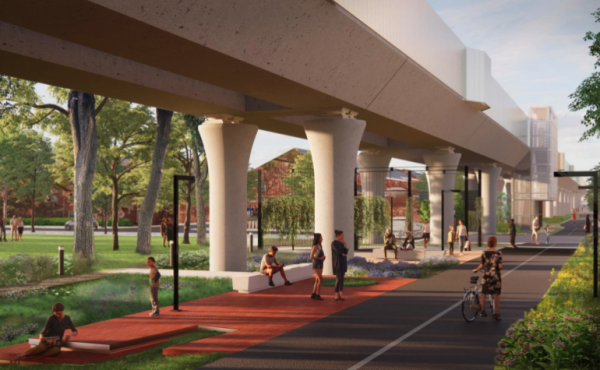
The Brookings Institution in the US has recently published a study, “Footloose and Fancy Free: A Field Survey of Walkable Urban Places in the Top 30 U.S. Metropolitan Areas,” which shows that walkable communities are making a real comeback in the US, and the tide is finally starting to turn against the suburban model of development. Some of the walkable areas are revitalized city centres, but some are also new developments created on an urban model.
A story about the report on the CBS website, “Study: Walking Is Easier Now In Top Cities,” explores some really interesting issues coming out of the report. One thing that caught my eye was the success of Washington, DC, and the importance played by both the development of a subway system and, equally importantly, the planning decisions that accompanied the system.
Leinberger [the author] attributes Washington’s success with walkability to several factors, including a large population of 20- and 30-somethings and recent strong economic growth. But the chief factor, he said, is the success of the Metro. The 31-year-old rail system has transformed the region, shaping development and making the walkable urban model more viable.
Leinberger calls rail transit a key factor in the success of walkable places. Roughly two-thirds of the 157 places he counted are served by rail, he said.
When the Metro was being built, county officials lobbied to put their portion underground along a central commercial road, rather than above ground and along the interstate. The county then loosened zoning regulations around each Metro stop, a policy that gave rise to “urban villages” such as Ballston.
It’s an important lesson to keep in mind as the Spadina line gets extended north — it will only succeed if the city works to make sure it results in urban-scale developments around the new stations.
photo by Kevin Steele



2 comments
American cities’ walkability, based on personal experience:
Toronto = 100
——————-
New York = 116
San Francisco = 107
Boston = 98
Philadelphia = 87
Washington DC = 81
Los Angeles = 69
Buffalo = 60
Atlanta = 52
Cleveland = 48
Detroit = 39
Las Vegas = 17
Phoenix = 8
Interesting that you rate Los Angeles and Washington, DC next to each other whereas in the Brookings Institute list Washington is number one. But in the Brookings list the whole metropolitan area is considered. I think Detroit deserves to be much higher on the list than Cleveland or Buffalo when you consider that the total area of walkable neighborhoods in those two cities is much less than in Metro Detroit.